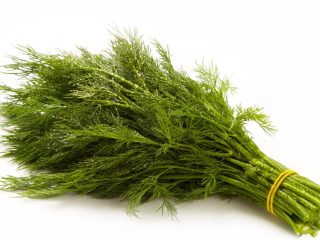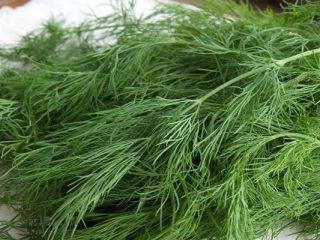Content
Dill Abundant Leaf deservedly received its name. The aromatic crop is unpretentious to growing conditions, and also produces a large harvest. By planting even a minimal amount of seeds, you can make a good supply for the winter.
Description of the dill variety Abundant-leaved
Dill Abundant leaf – mid-early variety. The bush is powerful. The rosette is erect, slightly spreading. The foliage is large, rich green in color with a waxy coating. The length of the shoots is 28-36 cm. The shape is highly dissected. The greens are juicy and tender. Differs in slow stem formation. Also, the variety has a late initiation of inflorescences. The umbrella is medium-sized, convex.
The plant has a strong aroma. It is used for salting, freezing, drying, preparing seasonings and preserving. Young sprouts are consumed freshly picked.
Productivity
The full cycle from planting to harvesting the Obilnolistny dill variety is 35-40 days. The first shoots appear 10-14 days after sowing the seeds. Blooms on day 70.
From one plant you can collect 20-25 g of greens.Productivity 3-3.5 kg per 1 square. m. The volume of harvested greens can be affected by untimely, poor watering and heat. With a lack of moisture, especially in the summer, growth slows down and shoots turn yellow. Cold weather will also negatively impact the growth of aromatic herbs. If the soil has not completely warmed up, you won’t have to count on the seeds hatching quickly.
Sustainability
The dill variety Abundant-leaved is a moisture-loving plant. Therefore, it is difficult to endure periods of drought. Does not like even slight frosts. Young shoots turn black and immediately wither. However, disease resistance is high.
Advantages and disadvantages
A photo of the Abundant-leaved dill variety gives a visual idea of the plant. Reviews from experienced gardeners will help identify the strengths and weaknesses of herbaceous crops.
Pros:
- juicy and aromatic greens;
- universal application;
- long storage period;
- undemanding in the growing process;
- good yield.
The downside is frost intolerance. Even a slight drop in temperature can cause the death of an entire plantation.
Landing rules
Dill of the Obilnolistny variety is sown directly into open ground. Well-lit beds are suitable for planting. The spice can coexist with any garden crops, except celery. It is undesirable to plant next to this vegetable.
Seed germination occurs at a temperature of + 3 °C. However, knowledgeable summer residents claim that maximum plant growth is possible only at + 16-18 °C. Prefers light loamy, sandy loam, neutral soils. Categorically does not accept an acidic environment.The selected area is pre-fertilized with manure, superphosphate, and potassium salt.
The description states that dill of the Obilnolistny variety should be sown in April-May, when the soil warms up to the desired temperature. Sow on moistened beds without tilling, but with obligatory mulching with a 2cm layer of peat. The distance between the seeds is 5 cm, the depth of immersion is 2 cm. It is optimal to sow dill in rows, so that later it is easy to thin it out. To obtain early greenery, the spice can be planted before winter.
Growing Dill Abundant Leaf
It is easy to grow dill of the Abundant-leaved variety with minimal labor costs.
- It is necessary to thin out the rows as soon as the seedlings begin to grow. Space is needed for full development.
- The distance between plants is at least 5 cm.
- Constantly remove weeds that choke out young greenery.
- Be sure to carry out water procedures. Dill abundantly needs to be watered every day or every other day, depending on weather conditions.
- If there is a possibility of night frosts, it is better to cover the greens with film. Even a slight decrease in temperature can lead to crop loss.
Diseases and pests
Dill of the Abundant-leaved variety rarely gets sick, but illnesses do occur. Possible diseases of the aromatic plant:
- powdery mildew;
- peronosporosis;
- fusarium wilt;
- cercospora blight
Does not recommend the use of chemicals due to the use of fresh dill. It is advisable to carry out preventive treatment of planting material.To prevent the occurrence of diseases, dill seeds of the Obilnolistny variety are soaked in warm water or disinfected with a solution of potassium permanganate. Such measures will minimize the risk of infection.
Conclusion
Dill Abundant leaf – mid-early variety. Suitable for cultivation in open ground. You can grow it at home on the windowsill so that you have greens on the table in winter. If you don’t want to bother or there is no opportunity for indoor cultivation, they prepare it for future use. All you have to do is dry, freeze or pickle the fragrant plant.










